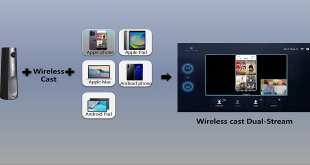Logo design is a critical aspect of brand representation, serving as a visual symbol that communicates the essence and values of a company. Simplicity is key in creating a logo that is easily recognizable and memorable, conveying the brand’s message concisely. The logo’s versatility is crucial as it must work across various mediums and sizes, maintaining its integrity and impact.
Timelessness ensures that the logo remains relevant and effective even as design trends change. Meaningful symbolism helps the logo resonate with the target audience, fostering a deeper connection to the brand. A carefully selected color palette evokes emotions and associations, reinforcing the brand’s identity. Lastly, scalability ensures the logo remains clear and legible, whether on large-scale billboards or small icons. By adhering to these principles, designers can craft a logo that establishes a strong brand identity and leaves a lasting impression on consumers.
Logo design is a critical aspect of brand representation, serving as a visual symbol that communicates the essence and values of a company. To create an effective logo, designers should consider the following principles:
- Simplicity: Design a logo with minimal elements to ensure it is easily recognizable and memorable.
- Memorability: Craft a logo that leaves a lasting impression on viewers, making it easily memorable.
- Versatility: Ensure the logo works across various mediums and sizes without losing its integrity and impact.
- Timelessness: Create a logo that remains relevant and effective over the years, transcending design trends.
- Meaningfulness: Incorporate symbolism that resonates with the target audience and reflects the brand’s identity.
- Color Palette: Choose a well-thought-out color palette that evokes emotions and reinforces the brand’s personality.
- Scalability: Test the logo in different dimensions to maintain clarity and legibility across all applications.
- Originality: Strive for uniqueness and avoid copying or imitating existing logos. An original logo sets the brand apart and helps it stand out in a competitive market.
- Balance: Achieve a harmonious balance between different elements of the logo, ensuring that no single element overpowers the others. Balance enhances the overall visual appeal and readability of the logo.
- Relevance: The logo should be relevant to the brand’s products, services, or industry. It should communicate the brand’s core values and create a connection with the target audience.
- Time and Patience: Designing a great logo takes time and patience. It’s essential to iterate, refine, and seek feedback to arrive at the best possible version of the logo.
- Flexibility: A flexible logo adapts well to various marketing materials and promotional items, allowing for creative applications without compromising its essence.
- Consistency: Maintain consistency in the logo’s usage across different platforms and materials. Consistency reinforces brand recognition and builds trust with consumers.
- Negative Space: Utilize negative space cleverly to create hidden meanings or symbols within the logo, adding depth and intrigue to the design.
- Understand Target Audience: Understanding the preferences, interests, and demographics of the target audience helps in designing a logo that resonates with them on a deeper level.
By incorporating these additional principles, designers can elevate their logo designs to create powerful visual representations that leave a lasting impact on the brand and its audience.
By adhering to these principles, designers can craft a logo that establishes a strong brand identity and leaves a lasting impression on consumers.
If you’re in search of an online logo generator, Turbologo is worth considering. In just a couple of minutes, you can download your logo and have it ready to use.
The principles of logo design are not mere guidelines but the foundation of creating a successful and enduring brand identity. By adhering to simplicity, memorability, versatility, timelessness, meaningfulness, a well-chosen color palette, and scalability, designers can craft logos that resonate with the audience and stand the test of time. An effective logo establishes a strong connection between the brand and its consumers, elevating its visibility and fostering brand loyalty in today’s competitive marketplace.
 Pagal World
Pagal World




